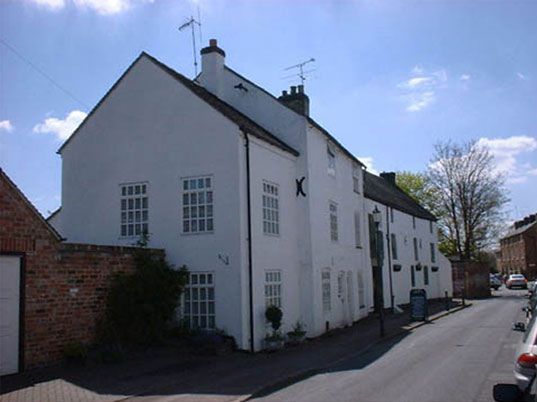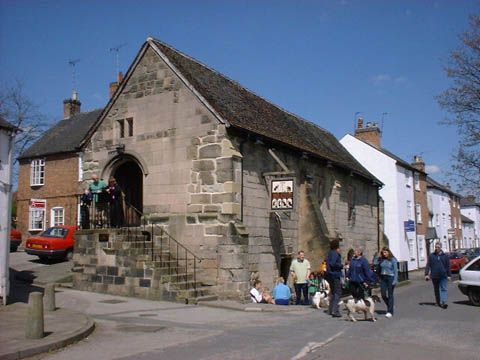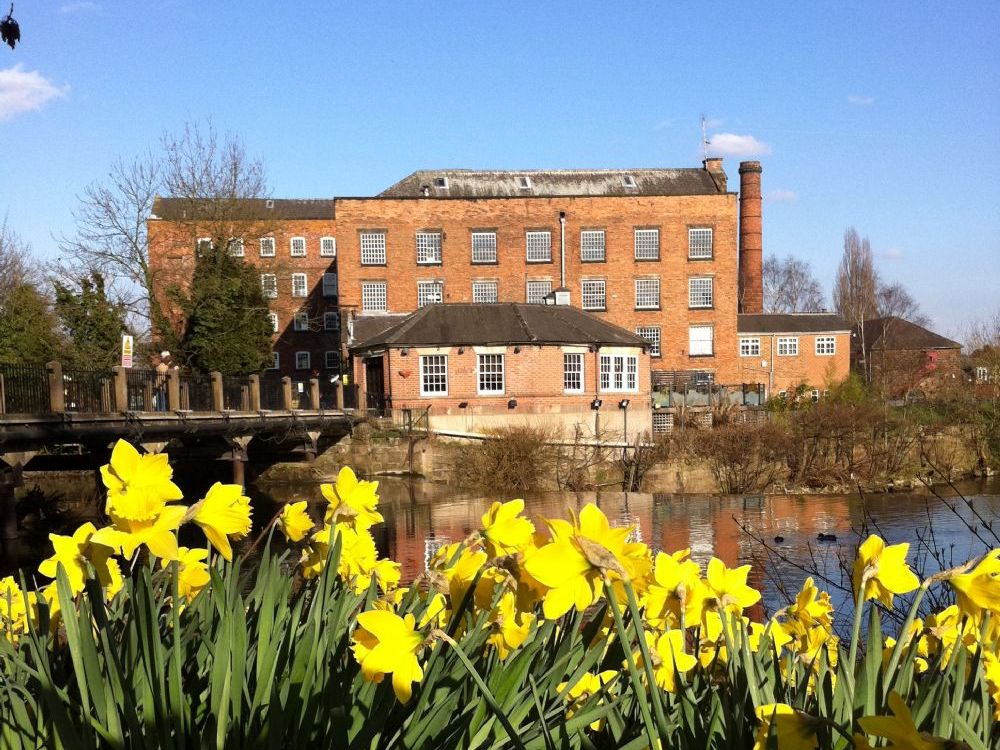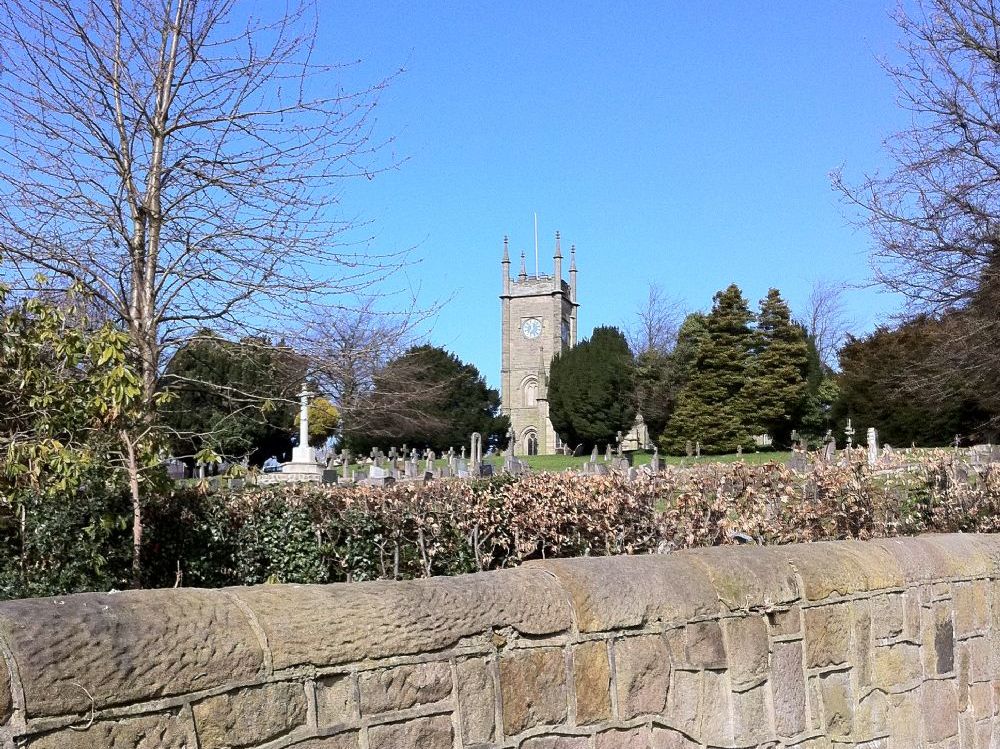Darley Abbey Today
Darley Abbey village in Derbyshire, is haven of peace and tranquility, a short distance from the busy A6 just north of Derby. It is a village of delightfully restored mill cottages, built in rows or around squares. It was originally an Augustinian priory, founded by Robert Ferrers, second Earl of Derby, around 1146. The Abbey became one of the most important in Derbyshire, but was surrendered as part of the Dissolution of Monastries, in 1538, and almost totally obliterated.

The Abbey Pub, is the only remaining building, thought to have been used as the Abbeys guest house for travellers and pilgrims during the 13th century. The pub has been tastefully and carefully restored and is very popular. During renovation, 12th century pottery was unearthed.

Darley park, which borders the village, was landscaped by William Evans and has attractive flower beds, shrubberies and lawns running down to a stretch of the river Derwent, which is used for boating and has an annual regatta. It once had a hall, built in 1727 but now demolished, that for 120 years was the home of the Evans family who built the cotton mill by the river in 1783.

The mill area is quite a large complex. The oldest parts, east mill, middle mill and west mill, are 5 storeyed and brick built. It dates from 1789-92, the rest all pre 1850. There is also a finishing house which has 3 storeys and sash windows, and an octagonal toll house in the mill yard. The Evans family built much of the housing, still to be seen today, though tastefully restored. It was mostly 3 storeyed and built of red brick. The Evans family were the sole employers of village folk. In return for long hours and hard work, families were cared for with subsidised rent, coal, hot meals for the sick and old. They were provided with warm blankets in cold weather and there was even a convalescent home in Llandudno. Villagers were buried at the expense of the Evans and had memmorial tablets erected.
The mill complex now is used by many different businesses and there is a popular restaurant, called The Darleys, which has views over the river.

The church of St Matthew was built in 1818-19 by Moses Wood of Nottingham for Walter Evans. It is stone built, unaisled, with tall slender windows. The chancel was built 1885-91. It contains monuments to the Evans family.